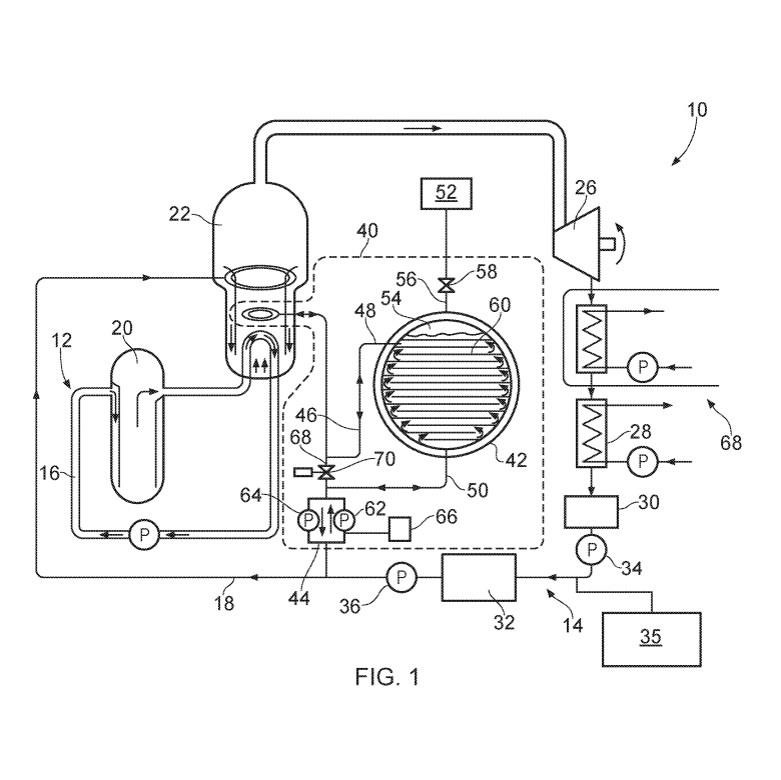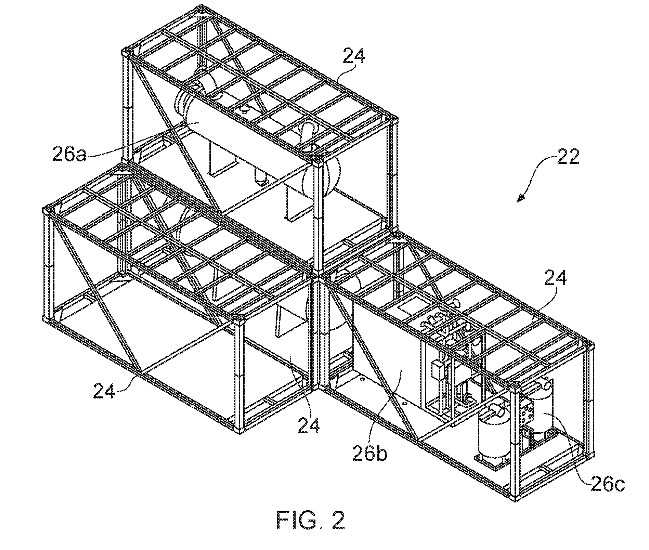21/11/2023
Welcome to our latest mini-series ‘Powering Tomorrow: Intellectual Property & Nuclear in the Age of Net Zero‘.
The pursuit of a sustainable future has never been more urgent, and the nuclear industry is emerging as a linchpin in the global effort to achieve net-zero emissions. Over the coming weeks we will delve into the role of intellectual property within the nuclear sphere, looking at developments in traditional nuclear power as the industry strives to adapt to the sustainable energy landscape of the future, and at the potentially revolutionary impact of nuclear fusion.
In the first article of the series my colleagues, Olivia Buckingham and Dongyoung Kim, discuss the renewed interest and commitment of the UK government towards nuclear power as a player in achieving Net Zero emissions by 2050. The article explores a surge in patent activity, emphasising innovations in nuclear reactor technology and the patent filing trends suggest a promising future for clean and efficient energy in the UK and beyond, positioning nuclear power as a cornerstone of the sustainable energy landscape. Read the full article…
Nuclear’s Behind-the-Scenes Influence: Fuelling Energy Storage Progress
Despite ongoing debates about its environmental impact, nuclear power plays a significant role in many countries’ plans to achieve Net Zero emissions by 2050. This commitment has spurred significant innovation in energy storage and transmission technologies, and in manufacturing methods, which are vital for nuclear energy generation in the UK, and bring benefits to the wider sustainable energy industry.
In 2015, the UK government announced its first competition for Small Modular Reactors (SMRs), a more adaptable approach to nuclear energy. However, by 2017, this initial SMR competition had concluded without advancing beyond the information-gathering first stage. In 2023, a renewed SMR competition was initiated, reaffirming the UK’s dedication to this energy source. The primary objective is to have SMRs operational in the UK by the 2030s, with the ambitious aim of increasing nuclear power capacity to 24 GW by 2050, aligning with the Net Zero objective.
Patent activity in the UK and around the world bears out a renewed interest in nuclear technology over the last decade. The chart below tracks variation in the number of patent filing with potential effect in the UK over the past 70 years. In the past 10 years, patent filings have begun to head back towards numbers not seen since the early development of nuclear energy technology in the 50s and 60s.

Notably, these recent patent applications transcend innovations confined solely within the realm of nuclear reactors. In fact, many of them relate to complementary innovations specifically designed for nuclear power generation. This emphasis on ancillary technologies underscores the recognition that the ultimate success of nuclear power in achieving the Net Zero objective hinges not only on efficient reactors but also on robust supporting infrastructure.
One of the pivotal ancillary innovation domains being concurrently developed alongside nuclear reactor technology pertains to energy storage solutions, as illustrated by two noteworthy patent documents discussed below.
Firstly, Rolls Royce, a global symbol of engineering excellence, holds UK Patent GB 2,532,580, filed in 2015, coinciding with the announcement of the first SMR competition. This patent unveils an integrated energy storage system ingeniously nestled within a nuclear power plant. This system employs a storage vessel, often spherical in design, to efficiently store excess thermal energy generated by the nuclear reactor. During the charging phase, steam from the steam generator is diverted to a saturator, which elevates the temperature of the contained water. The heated water is then stored in the vessel. Cooler water from the vessel returns to the saturator, repeating this process until the vessel is charged with water at a temperature close to but below saturation. During discharging, the process reverses, with heated water from the vessel directed to the steam generator to generate electricity. This energy storage system offers advantages in maintaining a steady fluid flow to the steam generator, reducing the risk of reactor spikes. It allows the nuclear reactor to sustain a consistent thermal power output while adjusting electrical power output to meet demand. Furthermore, it provides flexibility in meeting peak electricity and heat demands, making it a valuable addition to nuclear power plants. This system is not limited to nuclear power plants but extends its efficient thermal energy storage capabilities to other energy generation applications.
Secondly, Westinghouse Electric’s recently granted European Patent No. 3, 642,548 details a modular and cost-effective thermal energy storage device tailored for storing and retrieving energy using heat. Unlike conventional energy storage solutions such as batteries or pumped storage, which store electricity, this system captures energy in the form of heat. It consists of concrete plates enclosed in a metal casing, with flow channels between the plates to facilitate the flow of a heat transfer medium (such as oil or salt). During the charging phase, heat from a source, like a nuclear reactor, is transferred to the concrete plates through the heat transfer medium. In the discharging phase, heat is extracted from the plates as the heat transfer medium flows in the opposite direction. The concrete plates feature fluting to introduce thermal breaks and slow down heat diffusion, thereby enhancing efficiency. This system can be conveniently scaled and assembled on-site, providing a cost-effective, modular energy storage solution for grid stability and the integration of renewable energy.
Commitment to increasing nuclear power capacity has also encouraged developments in the manufacturing methods which are necessary to realise this goal.
Again turning to Rolls-Royce, UK patent application GB 2,549,138, filed in 2016, not long after the announcement of the first SMR competition, covers a method of local vacuum electron beam welding intended for use in manufacturing pressure vessels for nuclear power plants. For obvious reasons, durability and robustness are required of any welded joints in a nuclear pressure vessel. At the time of filing the application, it was industry standard to pre-heat components before welding to reduce the chances of hydrogen induced cracking in the components. The method claimed in the patent circumnavigates the need for pre-heating by realising that welding in a vacuum can eliminate the presence of hydrogen, removing the risk of hydrogen induced cracking. Avoiding a pre-heating step cuts costs and reduces manufacturing time without compromising the integrity of any welded joints.
Another of Rolls-Royce’s 2016 UK patent applications, GB 2,550,183, was directed to a modular nuclear power plant, recognising that nuclear plant construction costs and time scales are often heavily impacted by the need to transport and fit together large and heavy components of the plant that have been constructed elsewhere. The application proposes a modular structure in which each module has a frame configured tessellate with the frame of another. The proposed structure and associated method of construction using these modules makes it easier and quicker to build a nuclear power plant.
These innovations demonstrate the interplay between cutting-edge nuclear reactor engineering and the vital ancillary systems within related domains, including energy storage and methods of manufacture. They underscore the central and indispensable role played by supplementary innovations in bolstering the reliability and resilience of the nuclear energy industry itself while simultaneously driving advancements that hold the potential to revolutionise energy storage across the board. Patent filing trends provide a glimpse into the promising future of clean and efficient energy in the UK and beyond, with nuclear power now apparently firmly positioned as a cornerstone of our sustainable energy landscape.
GB 2,532,580 – Rolls Royce’s energy storage system nestled within a nuclear power plant:

GB 2,550,183 – Rolls-Royce’s modular power plant:

Read the next article of Powering Tomorrow: Powering Towards the Fusion Era
This article is for general information only. Its content is not a statement of the law on any subject and does not constitute advice. Please contact Reddie & Grose LLP for advice before taking any action in reliance on it.




